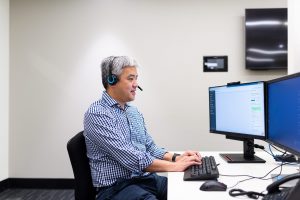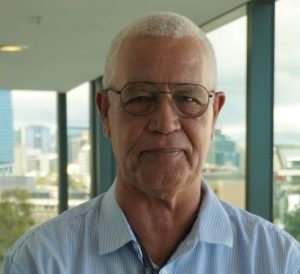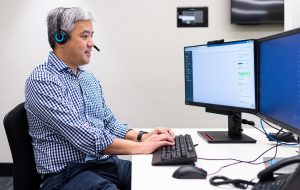“I caught the plane three times. I caught the ambulance two, three times up here too.”
That’s one experience of a patient living in remote South Australia and having to travel to Adelaide for specialist healthcare.
Telehealth can help, says new research.
One-on-one interviews conducted as part of service at Central Adelaide Local Health Network (CALHN) provide evidence of the value of real-time, video-based telehealth for delivery of healthcare to people living far away from specialist services.
Established at the Royal Adelaide Hospital multidisciplinary foot clinic, a telehealth service for diabetes-related foot disease for rural and remote Aboriginal and Torres Strait Islander communities was determined from interviews with patients to deliver:
- practical benefits for patients, as they were able to stay at home
- improved patient access to specialists and facilities
- reassurance for patients that a specialist had seen their feet
- patients feeling included in conversations about their health.
Relationships, wellbeing and trust
Dr Neil McMillan is Principal Medical Scientist in Vascular Surgery at the Basil Hetzel Institute for Translational Health Research at The Queen Elizabeth Hospital, and co-author on the paper.
“This study focused on the qualitative experiences of Aboriginal people in South Australia accessing our new foot telehealth service,” Neil says.
“It demonstrates the real positives for people who might otherwise need to travel substantial distances to access multidisciplinary care at the Royal Adelaide Hospital.”
Together, the paper authors report the research shows the advantages of real-time, video-based telehealth go beyond reduced travel burden and improved access to specialist care.
“This model of care may facilitate relationship-building, patient wellbeing, and feelings of trust and safety for Aboriginal and Torres Strait Islander patients with diabetic foot disease,” says Neil.
“Our research also highlights the need for culturally-safe care across technologies, in order to help Aboriginal and Torres Strait Islander people with diabetes complications to receive adequate care closer to home where possible.”
Voices of patients
Distinct from quantitative research (which collects and analyses numerical data), qualitative research involves collecting and analysing non-numerical data to understand concepts, opinions or experiences.
In this study, one-on-one semi-structured interviews were conducted with 11 participants who identified as Aboriginal and who had participated in the telehealth foot service. Interviews were transcribed, de-identified and analysed.
In terms of the telehealth model delivering practical benefits, one patient said:
“I just found it was a much easier for me in my position to actually do it from home and have my GP, he was there [at my home] anyway. We’re all communicating with everybody, with each other. So it wasn’t a hindrance to me at all, it was actually a benefit to me that I could actually be in my own home.”
Regarding access to specialists and facilities, a patient said:
“… when we needed anyone else on board, they’d also come in on the conferences and that as well. So it was my GP, myself, [the senior podiatrist] and whoever else needed to be there at the time.”
Access to a specialist meant patients felt reassured, with one stating:
“The best part of it was they could see for themselves my foot, and explain to me as well over the TV … and I didn’t need to go to Adelaide, we can just do it by TV.”
Patients reported the service helped them feel included in real-time conversations, for example:
“Well, yeah, they did include me when they were talking to each other and that, but when it was all finished, they then explained it to me again, just to make sure I understood everything.”
Taking the next steps
Neil says while the telehealth service started out focusing on Aboriginal people with diabetes-related foot complications, it is currently branching out further.
“We have now provided telehealth consults for over 150 patients – both Aboriginal and non-Aboriginal – across South Australia and other catchment areas of the Royal Adelaide Hospital,” he says.
“The service is now at the stage where we can see more differences in patient outcomes, with shorter length of stay for patients seen via telehealth and higher rates of limb amputation among patients who were never referred to the telehealth service.”
Limb amputation is a common end-point for poorly-managed diabetes-related foot disease.
To date the telehealth service has been funded by grants from the Commonwealth Indigenous Australians’ Health Programme and the CALHN CEO Rapid Implementation Scheme.
Read the research
Co-authors on the paper are from The University of South Australia, CALHN Departments of Vascular Surgery and Podiatry, and Watto Purrunna Aboriginal Health Service.
The original research paper is available to read for free at Rural and Remote Health, an open-access international academic journal: A qualitative exploration of the experiences of Aboriginal and Torres Strait Islander people using a real-time video-based telehealth service for diabetes-related foot disease.



